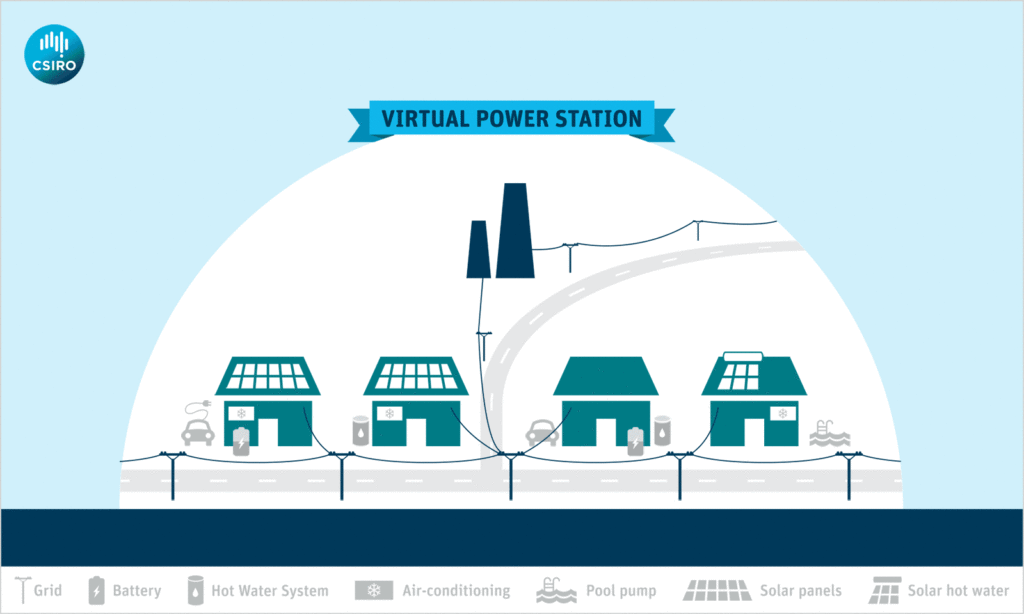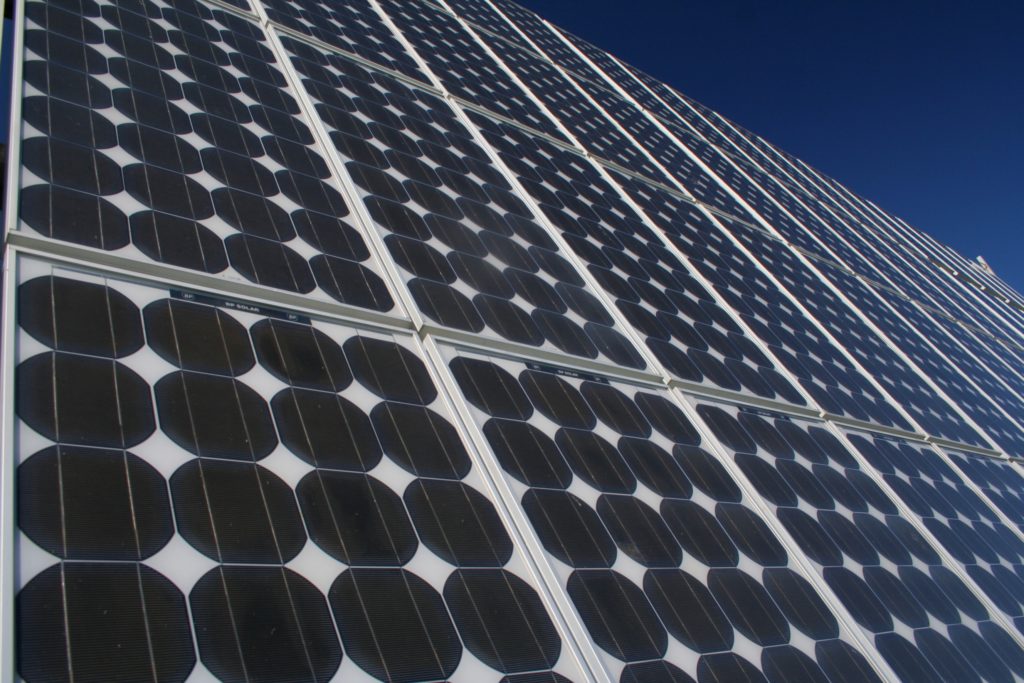Household solar is on the rise, which could potentially cause instability in our energy supply. So we're stepping in to bring some (virtual) power to the people

Large full shot of sun in the orange sky.
Household solar is on the rise – Image credit Skyseeker/Flickr
Across Australia, neighbourhoods are changing. Household solar is on the rise, and the amount of electricity being generated by these rooftop photovoltaic (PV) panels is increasing. People are also investigating energy storage options, all the while expecting their household generation and storage devices to sync seamlessly with the grid.
What you may not already know is that this user-generated energy has the potential to affect the stability of our energy supply. How? Well, the more solar panels in a neighbourhood, the more likely you are to have high and fluctuating voltages and unstable power supply that makes it tricky to export your solar energy. This could lead to restrictions on the amount of household solar-based electricity connected to the grid.
The other challenge with household solar is that it’s totally dependent on weather conditions, so a bit of afternoon cloud cover could ruin your air-conditioned bliss. We’d go so far as to say that changing weather conditions are the ultimate kick in the shins for renewable energy sources like solar and wind.
But these renewable energy sources are an important part of our low-carbon energy future, so we need to sort it out, and pronto! With that challenge before us, we’ve identified a system that can help.
VIRTUAL POWER TO THE PEOPLE
What used to be a relatively straight line from the power plant to your light switch is now far more complex. So if we take a step back and start to look at household solar systems alongside traditional power plants and other energy generators, what we see is a large, interconnected network…
Behold, the ‘Virtual Power Station’. It links energy sources like rooftop solar panels with energy storage devices and load control systems in a web-based network, to create a single reliable energy supply, much like a power station.
Here’s how it works: a central control point intelligently monitors the power output of each energy generator in the network – for example, each set of solar panels on your street. The Virtual Power Station can then combine them into a single electricity supply and provide it to the grid. Essentially, it’s turning a collection of separate, fluctuating power sources into one smooth, reliable energy source – what’s known as a ‘dispatchable supply’. As you can see in this graphic, neighbourhood houses connect through a network, and power sources and storage devices ebb and flow throughout the day.

BENEFITS
Happily, the Virtual Power Station offers benefits to both the producers and users of electricity.
Households are paid more for their electricity and waste is avoided
The electricity market pays more for electricity that is dispatchable, and the Virtual Power Station is creating an electricity supply that is more attractive to energy distribution companies. It helps households to take advantage of peak prices, and by avoiding energy waste it provides financial benefit to consumers in constrained network areas.
Improving access to the grid for household solar
Creating a dispatchable supply of energy also ensures that the grid can use it. By managing power quality in constrained network areas, the VPS allows higher penetration of solar generation and more renewable energy in the energy mix.
Smoother sailing on cloudy days
By combining energy sources and storage systems, the Virtual Power Station can overcome low solar generation on cloudy days.
Adding value to existing renewable systems
The Virtual Power Station can be added to existing renewable generation systems, increasing their cost effectiveness by adding value to the power they generate. This could also enhance the attractiveness of renewable energy technology and lead to greater uptake.

Solar panels
Solar panels are a fantastic renewable energy source, but their rise in popularity could cause instability in our energy supply.
Use each system as a weather sensor
Accurate prediction is important for dispatchability. The web-interface will report power generation data for each site meaning you could potentially use each solar panel as an indicator of cloud density or solar intensity and each wind turbine as a wind speed sensor.
Reducing greenhouse gas emissions
As it’s powered 100% by renewables, no GHG emissions will be created as a consequence of energy production. Also, ‘green power’ has the potential to be worth comparatively more to the electricity market, further improving the economic case for renewable generation systems.
WHAT’S NEXT?
Before your neighbourhood can depend on a Virtual Power Station, we need to:
- Run some simulations to assess what works best, and see what impact it could have Australia-wide
- Refine a control system for individual sites – managing the quality of neighbourhood power and making sure wastage is minimal means $ savings!
- Do lots of maths to figure out how energy distributors can best work into the VPS, and
- Most excitingly, following some simulations in our Renewable Energy Integration Facility, we’ll test the VPS in a new Lend Lease residential development.
Once our testing is done, we’ll supply our information to Australian distribution network operators in the hope we’ll be able to better address the challenges that arise from increasing levels of PV-based electricity in distribution networks while improving power quality.
We’re trialling the Virtual Power Station thanks to funding support from ARENA.
We’re collaborating with SMA, The University of Newcastle, Tritium, Selectronic, Lend Lease and Ergon Energy to bring the Virtual Power Station to life.


13th May 2017 at 5:57 pm
we do not need nuclear no way a much better idea is to have wave power around southern coastal areas for base load renewables as is used for garden island naval base in western Australia combined with batteries solar and wind . wave power is also used as a desalination plant directly when power is not needed so giving high quality water .
as the csiro has shown a way to export hydrogen we have a way to export renewables and make money and help other counties towards a renewable future and far more cheaply than nuclear and of course far safer
5th April 2016 at 12:33 pm
This is good innovation for solar energy but it is practical for residential customers compare to industrial and business area are heavily used the electricity.
15th March 2016 at 8:48 pm
A Virtual Power Station as described is a great idea; having the ability to smooth solar power capacity which inevitably is modulated by passing cloud masses. However, extended and/or extensive cloudy periods will present significant problems. The Division of Energy Technology, long since redirected, for several years recorded insolation levels throughout much of Australia. As I recall, insolation measurements in Victoria did not support solar as a reliable energy source, particularly during winter months. Maintenance of current power capacity is necessary to cater for high energy demand over extended periods. Nuclear energy could buffer solar energy systems, ensuring reliable power supply over prolong periods. This needs consideration when costing large scale solar energy applications.